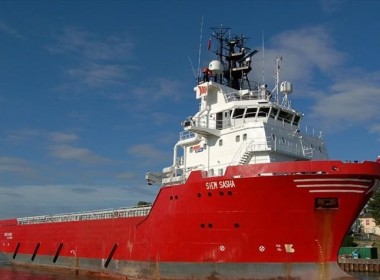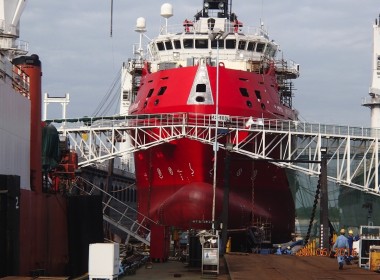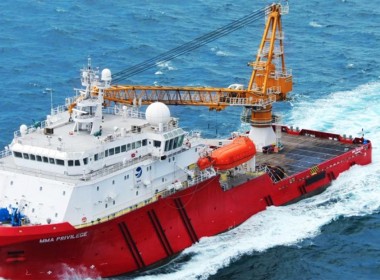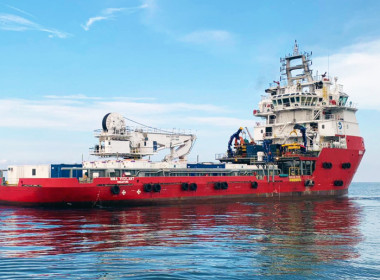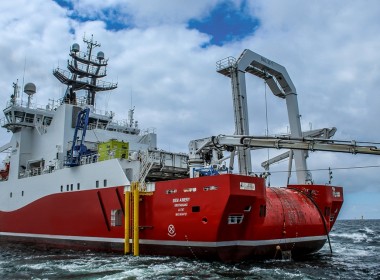COLUMN | Forbear with me – MMA Offshore, Siem Offshore and Hermitage Offshore – Part 1 [Offshore Accounts]

As the oil price continued its recovery above the key US$40 per barrel price, many offshore players have been busy adopting the age-old strategy of “extend and pretend” to kick their financial obligations down the road and keep them solvent for a while longer.
Lenders are being asked to be patient and wait out for the recovery rather than demanding loans on vessels are repaid. The two biggest players in the industry, Tidewater and Bourbon, are now fully restructured, along with construction giant McDermott (here) whilst the third largest OSV player internationally, Solstad Offshore, is also swapping its expensive debt for equity and wiping out the old shareholders (see here), whilst Hornbeck Offshore has entered Chapter Eleven proceedings.
This means that pressure is mounting on the rest of the industry to either do the same, or kick the can on debt repayment further down the road. So, June and July have been busy as the laggards try to talk their way out of their financial problems.
MMA Offshore – hard times
The situation at MMA Offshore has deteriorated since we last reported on the company’s travails in 2019 (here) and MMA’s COO stepped up as CEO. In May, the company performed a wave of layoffs and cost cutting, without announcing the details to the stock market (“Our people are critical to our success”, according to the 2018 annual report here (page 9) but, apparently, there were too many of them this year, and their reduction is not a material event in the eyes of the board).
In the second half of 2019 the company agreed to purchase ailing Perth-based ROV and subsea company, Neptune Marine Services, paying AU$5 million (US$3.5 million) in cash and issuing AU$13.5 million worth of MMA shares to Neptune’s lucky shareholders.
This delivered a serious blow to MMA’s efforts to market its subsea vessels to other subsea players in Asia-Pacific which compete with Neptune, especially Shelf Subsea, Oceaneering and Fugro. It also placed MMA in jeopardy if Neptune’s problems were to drag down its new parent company, something we can’t assess until MMA publishes its next set of results for the January to June 2020 period, next month. In another cost cutting move, the company moved its headquarters from a premium office in Fremantle overlooking a marina, to the gritty Perth suburb of Welshpool, where Neptune was based.
Times are clearly hard for MMA. On Friday, July 10, the company’s battered share price closed at less than six Aussie cents, giving the MMA a market capitalisation of less than US$37 million, barely the price of one of its subsea ships. One trusts Neptune’s shareholders sold the MMA paper quickly. But whilst the company’s shares have dropped like a stone, its debt has not budged. As we reported, MMA’s longstanding standstill with its consortium of long-suffering banks was due to expire on June 30, when the company was due to make a payment of AU$5 million.
Supermarket sweep by the banks, cancelled
It seems this token payment on the company’s AU$120 million and US$101 million of debt was made, but immediately, MMA rushed to agree waivers to the debt covenants and to prevent further depletion of its cash. The loan agreement also contained a biannual cash sweep, whereby the bank consortium would take any of MMA’s excess cash above AU$70 million on June 30, 2020, December 31, 2020, and June 30, 2021. This requirement was waived up until December 31, along with the several of the debt covenants.
The company negotiated a waiver of this cash sweep until December 31, 2020 to allow MMA to retain any excess cash, “to support the business through this challenging trading period” (announcement here)
But the clock is ticking for MMA. Its loan agreement expires in September 2021 and all the debts have to be repaid then, which seems highly unlikely, so the company must ultimately refinance or restructure the debts in the coming fourteen months.
Arbitration: Some you win, some you lose
MMA’s situation is not helped by its announcement that it lost a major arbitration in Singapore against Jebsen and Jessen (J&J) over some subsea cranes which MMA cancelled in 2015 (announcement here) for its new building subsea vessels.
We had highlighted that there was all manner of accounting ambiguity over the cranes on the company’s ships in 2019, when the same figure of US$7.3 million kept reappearing in the accounts, without the notes explaining what was actually happening. Now further uncertainty exits for MMA and its shareholders.
Has it actually lost badly when the numbers come it from the arbitration panel, or is this a Pyrrhic victory for J&J? Nobody knows and the MMA announcement to the Aussie stock exchange reveals the depths of uncertainty:
“Despite MMA’s position that it was entitled to terminate the contracts (a position that it continues to steadfastly hold), in its interim award, the tribunal has held that MMA wrongfully terminated the contracts, but also that J&J breached both contracts in the construction of the cranes that exceeded contractual specifications as to weight. The tribunal has ordered another hearing to assess the damages suffered by both J&J and MMA. That hearing is subject to MMA bringing an application to set aside the interim award (discussed below). MMA’s further recourse would be to apply to the Supreme Court of Singapore for orders setting aside the interim award – a course of action which MMA is currently considering. MMA is in the process of taking Singapore legal advice about next steps, and is yet to make any decision about how to proceed.
MMA is currently unable to determine the financial impact of the interim award because the quantum of damages under the interim award has yet to be decided (and, as mentioned above, is still the subject of a further hearing before the tribunal or the subject of a setting aside application in the Singapore Supreme Court).
In addition, although J&J had claimed a decree of specific performance (i.e. that MMA take delivery of the cranes and pay the balance of the purchase price on each), in its interim award the tribunal has denied its claim for the decree and instead awarded J&J damages for MMA’s alleged “wrongful” termination of the contracts. As J&J will keep both cranes, the damages contemplated by this interim award may include J&J’s loss of profit on the sale of the cranes, J&J’s costs of storing, insuring and maintaining the cranes and J&J’s legal costs.
As such, given that the purchase price for each crane was approximately SG$6 million (being a total of SG$12 million), based on MMA’s preliminary assessment (and assuming that MMA decided not to apply to set aside the interim order or was unsuccessful in any set aside application), the amount of damages awarded to J&J may be significantly less than this amount as:
The damages awarded under the interim award may only include J&J’s loss of profit on the sale of the cranes, J&J’s costs of storing, insuring and maintaining the cranes and J&J’s legal costs;
Any award of damages under the interim award will be reduced by the instalments which MMA has already paid on the cranes (a total of SG$2.34M), plus the loss and expenses suffered by MMA based on the tribunal’s findings that the cranes exceeded the weight specifications/parameters set out in the contracts that resulted in rectification works to the vessels necessary to accommodate the heavier cranes, increased fuel consumption and loss of cargo carrying capacity, which MMA has claimed a total of US$6.435 million and is for the tribunal to assess.”
Clear as mud. So, who knows? What is obvious is that MMA has about a year to sweet talk its lenders into a deal to extend its loans, or find new lenders to give it new money to pay down the old loans. Now that it’s a penny stock trading from an industrial estate in Welshpool, this may be a tough call. But if you need two five-year old subsea cranes available prompt in Singapore, please give Jebsen and Jessen a ring.


